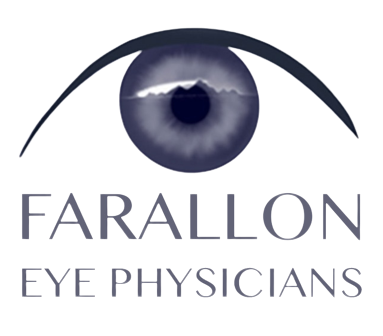Fluorescein Angiography
Fluorescein Angiography
Fluorescein Angiography
Fluorescein angiography is an eye test that is used to detect blood circulation problems in the retina and choroid, structures that are located in the back of your eyes. The test uses an injected dye and a special camera to take photos of blood vessels. It is used to diagnose certain eye conditions, including retinopathies and macular degeneration. Fluorescein angiography is a simple and short test that is performed in your doctor’s office. There is no radiation associated with this test.
Anatomy
The retina is located at the back of your eye. The retina is a thin tissue layer that contains millions of nerve cells. The nerve cells are sensitive to light. A main purpose of your eye is to focus light on the retina. The choroid is the lining underneath the retina. The choroid contains blood vessels that supply your retina with blood and oxygen to keep it healthy.
Cones and rods are specialized receptor cells in the retina. Cones are specialized for color vision and detailed vision, such as for reading or identifying distant objects. Cones work best with bright light. The greatest concentration of cones is found at the center of the retina. Rods are located throughout the rest of the retina.
Your eyes contain more rods than cones. Rods work best in low light. They perceive blacks, whites, and grays, but not colors. They detect general shapes. Rods are used for night vision and peripheral vision. High concentrations of rods at the outer portions of your retina act as motion detectors in your peripheral or side vision.
The receptor cells in the retina send nerve messages about what you see to the optic nerve. The optic nerve extends from the back of each eye and join in the brain at the optic chiasm. From the optic chiasm, the nerve signals travel along two optic tracts in the brain and eventually to the occipital cortex.
Diagnosis
Uses
Fluorescein angiography is an eye test that is used to detect blood circulation problems in the retina and choroid. The process uses an injected orange colored fluorescent dye and a special camera to take pictures of the blood vessels. This test can detect blood vessel leakage and abnormalities. If a circulation problem is present, the pictures can help outline the affected area for treatment planning. Further, the test may be used to monitor treatment effectiveness.
Fluorescein angiography is a test that is used to detect or monitor many conditions, including but not limited to:
• Diabetic Retinopathy
• Macular degeneration
• Retinal Detachment
• Retinal Vessel Occlusion
• Retinitis Pigmentosa
• Retinopathy
• Microaneurysms- Enlarged retina capillaries
• Papilledema- Optic disc swelling
• Hypertensive retinopathy
• Cancer
• Tumors
• Blood Circulation Problems
• Inflammation or Swelling
Preparation
You will need to have someone drive you home from the test because your vision will be blurred following the procedure. Your doctor may have you discontinue taking certain medications prior to the test. You should tell your doctor if you are hypersensitive to fluorescein or if you are pregnant.
Testing
Your doctor will dilate your pupils with eye drops. Your face will be stabilized with a positioning device for the test.
Your doctor will use a special camera to take pictures. Next, the dye is injected into your vein. Your doctor will take pictures as the dye flows through the blood vessels in your retina and choroid. After about 10 minutes, more pictures will be taken.
Your vision will be blurred for several hours after the test. Your urine will be bright orange in color for 24 to 48 hours following the test, as the dye leaves your system. Some people may be hypersensitive to the dye and experience mild nausea which disappears rapidly. In some cases an allergic reaction can occur which varies from mild itching to hives. These reactions occur within 15 to 20 minutes after the injection and are usually treated with observation or antihistamines. In rare instances, a more severe reaction can occur which requires rapid medical attention. You will usually be kept in the office after this test for about 30 minutes to make sure no reactions are occurring.
With newer techniques such as digital photography the results are immediately available and your doctor will more than likely discuss them with you immediately.
This information is intended for educational and informational purposes only. It should not be used in place of an individual consultation or examination or replace the advice of your health care professional and should not be relied upon to determine diagnosis or course of treatment.
The iHealthSpot patient education library was written collaboratively by the iHealthSpot editorial team which includes Senior Medical Authors Dr. Mary Car-Blanchard, OTD/OTR/L and Valerie K. Clark, and the following editorial advisors: Steve Meadows, MD, Ernie F. Soto, DDS, Ronald J. Glatzer, MD, Jonathan Rosenberg, MD, Christopher M. Nolte, MD, David Applebaum, MD, Jonathan M. Tarrash, MD, and Paula Soto, RN/BSN. This content complies with the HONcode standard for trustworthy health information. The library commenced development on September 1, 2005 with the latest update/addition on April 13th, 2016. For information on iHealthSpot’s other services including medical website design, visit www.iHealthSpot.com.
To schedule an appointment for optical, ophthalmology or cosmetic services in Daly City, California, simply call the office of Susan Longar, MD.



